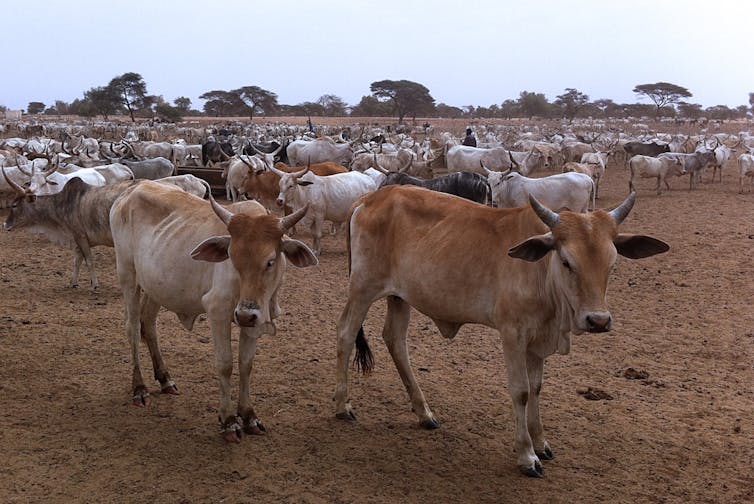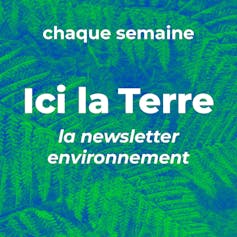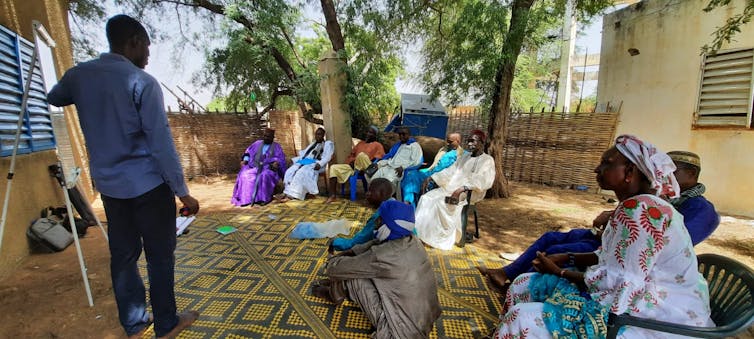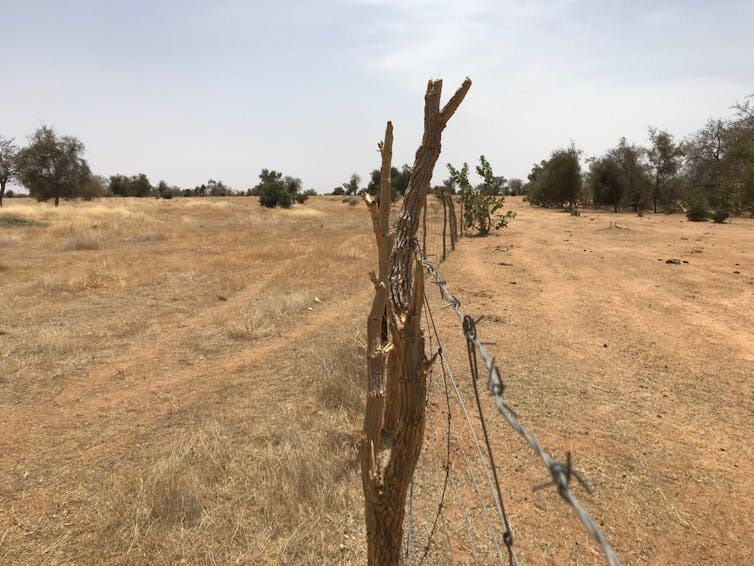
In September 2020, a report commissioned by the United Nations Convention to Combat Desertification made a harsh but expected judgment on the Great Green Wall (GMW) strategy and in particular on its progress (UNCCD, 2020).
In January 2021, in response to this failure, the "GMV accelerator" was launched at the One Planet Summit in Paris. This program aims to relaunch and revitalize a project which, after an initial experimental phase, is seeking a second wind. The time for change seems to have come to adopt a new adjustment between actions on the ground and political ambitions: this time of the accelerator must be that of a new appointment between the GGW and its territories .
Low-impact local projects
Adopted in 2007 under the aegis of the African Union, the GGW results from the voluntarism of the African Heads of State in terms of “fight against desertification ”. Initially defined along a continuous regional route 15 km wide and made up of tree plantations in order to restore 250 million hectares of degraded land by 2030, the project's intervention strategy then experienced a shift in favor of an approach integrated, on the model of a mosaic of diversified activities with the objective of ecological and human well-being .
This redefinition does not prevent the objectives of the GGW from remaining both vague and strongly constrained by objectives set on a global scale (reforestation as a tool in the fight against climate change ) even though its achievements are struggling to take into account local realities in the targeted territories.

Under these conditions, the question of its future and its raison d'être remains unresolved, the enthusiasm aroused by the project on a continental and international scale masking an intangible materiality on a local scale in the various member countries, as is the case in Senegal, a country acting as a laboratory for the regional project.
So far, the two main pillars of GGW action in Senegal are reforestation through tree planting ( officially 72,450 ha in 2019 ) and support for vegetable production.
Reforestation, however, seems difficult to reconcile with the pastoral vocation of Ferlo , the area where the project is located, while market gardening comes up against many difficulties (access to water, poor technical mastery of market gardening, uncertain targeting of beneficiaries) and its sustainability is not assured.
The challenges encountered by the project managers are therefore as much social as ecological, in this territory where the articulation between exogenous projects and pastoralism has often been difficult.

To follow environmental issues as closely as possible, find our thematic newsletter “Ici la Terre” every Thursday. On the program, a mini-dossier, a selection of our most recent articles, excerpts from books and content from our international network. Subscribe today .
Rigid intervention strategy
This diagnosis of a mixed impact of GGW activities is supported by the perceptions of the project by the various stakeholders. Indeed, the local populations see it above all as a “top down” state environmental project disconnected from local realities.
Experiences of reforestation operations with contrasting results and controversial investments in private forestry (gum arabic sector) in Ferlo are significant precedents. The debates they arouse undermine local acceptance of the project, perceived as a threat to the activities of breeders with no real compensatory measure for the populations (sustainable jobs, substantial remuneration, availability of pasture). After almost 15 years of existence, the impatience and frustration of the local populations are felt on the ground.
The temptation of "identical reproduction" of developments also seems dominant from the point of view of project managers, who are struggling to develop a truly territorialized vision of the intervention strategy, which is nevertheless necessary for a better alignment of environmental benefits. with the prospect of gains for local communities.
Anchoring the wall in the territories
A better territorialization of the GGW is essential, in order to promote the articulation of common actions on the scale of the territory of the ZSP, with others, more diversified and adjusted to local aspirations in terms of development.
This undoubtedly implies a break with the current GGW governance model of relying more on participatory approaches. Research has, for example, identified the community management of natural resources integrating assisted natural regeneration (a less costly method but more ecologically efficient and better socially accepted than reforestation), as a strong aspiration of local populations.

Rather than an African environmental “showcase” projected on an international scale, the GGW could thus become a governance and local development tool addressed to local populations and above all to transhumant herders or agro-pastoralists.
Achieving this objective implies that the GGW relies on the instruments that already exist in terms of territorial governance and shared management of resources (pastoral units, borehole management committees, municipal councils) and, beyond that, that it manages to open the circle of stakeholders to all players in the territory.
The accelerator, an opportunity to seize
The accelerator presents itself as an opportunity for a new meeting for the GGW with its territories. Endowed with more than 14 billion euros of new financing , its objective is to support the efforts of the States for "a more global approach to rural development", for "the improvement of production systems" and for "ensuring sustainability in term of the entire Sahel region".

This opportunity can only be seized if tangible and locally constructed actions with the communities are associated with each of the precepts cited. And it will only materialize on the condition that the "acceleration" embodied by this new structure does not further accentuate the gap between the divergent temporalities with which the GGW is confronted: short time of politics, long time of ecology vegetation, rhythms of local actors, their daily lives and their evolutions.
The question of the nature of this acceleration and the moment when it intends to occur arises implicitly. In the ZSP, the changes experienced and perceived by herders are rapid and brutal: qualitative and quantitative degradation of pastures; transformations of territories and their governance (infrastructure, decentralization); multiplication of actors in charge of the management of natural resources.
Accelerate development processes
In this context, the populations express the need for support and assistance in adapting to the changes they are undergoing – it is therefore less a question of accelerating than of attenuating the already rapid changes in their environment. They also express strong and long-standing expectations in terms of local development processes deemed too slow – access to water, electricity, health, school.
Despite the reports of failure, the time spent is not wasted: the GGW can rely on its longevity to capitalize on technical learning, strategic adaptations and political and media mobilizations that will be beneficial to it.
The project therefore has to make its way between requirements – the restoration of the environment in the medium or long term and immediate material needs – which, for the time being, are not considered together. The accelerator must succeed in pushing the GGW to change pace, scale, and action strategy in order to make it the model it aims to become. ![]()
Ronan Mugelé , Doctor of Geography, University of Paris 1 Panthéon-Sorbonne ; Amadou Hamath Diallo , post-doctoral socio-anthropologist; Deborah Goffner , Research Director and Olivier Ninot , Research Engineer, CNRS. Dr in Geography, National Center for Scientific Research (CNRS)
This article is republished from The Conversation under a Creative Commons license. Read the original article .
